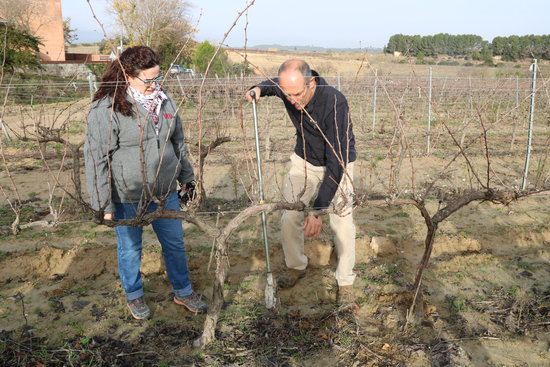New project to help vineyards survive climate change
Observatori de la Sequera in Alt Penedès county begins collecting data on soil conditions from sensors installed next to vine roots

Among the many areas threatened by climate change are Catalonia's vineyards, the basis of the country's wine making industry and one of the key features of its landscape.
In order to steal a march on the predicted changes in weather conditions as a result of climate change, a new drought watchdog has been launched in Alt Penedès county.
Based in Sant Sadurní, in the heart of Catalonia's cava making county, the Observatori de la Sequera will gather information on rain and soil conditions to help combat dry periods.
Monitoring soil conditions
Robert Savè, a researcher from the Institute of Agrifood Research and Technology (IRTA), says the project includes installing sensors to monitor the conditions of the soil.
"A record will be made with data from Catalonia's meteorology service and from the sensors to find out how the plants are suffering and prepare for negative situations."
The project is a joint initiative involving the Barcelona regional council and the county council, with funding from the European Life Clinomics climate change project.
Preliminary data has already been collected from sensors installed in vineyards in a number of local places, where the vines are not watered and depend on rainfall.
"The only way to endure as a winegrowing industry is getting the most out of rainfall, which is increasingly less frequent," says Savè, who heads the project.
Sensors installed next to roots
The sensors are planted in the soil, close to the roots, at depths of 15, 30 and 45 centimeters, so as to detect the humidity at different levels.
The data gathered by the sensors is sent to a device installed in the vineyards, which processes them, and then sends them on to a server via the mobile network.
The data are combined with those on rainfall from local weather stations to produce a final report to help growers' make decisions, such as when to prune or harvest the vines.
For the moment, the data collection is ongoing, but the watchdog says the information will become available to local grape growers in 2021.